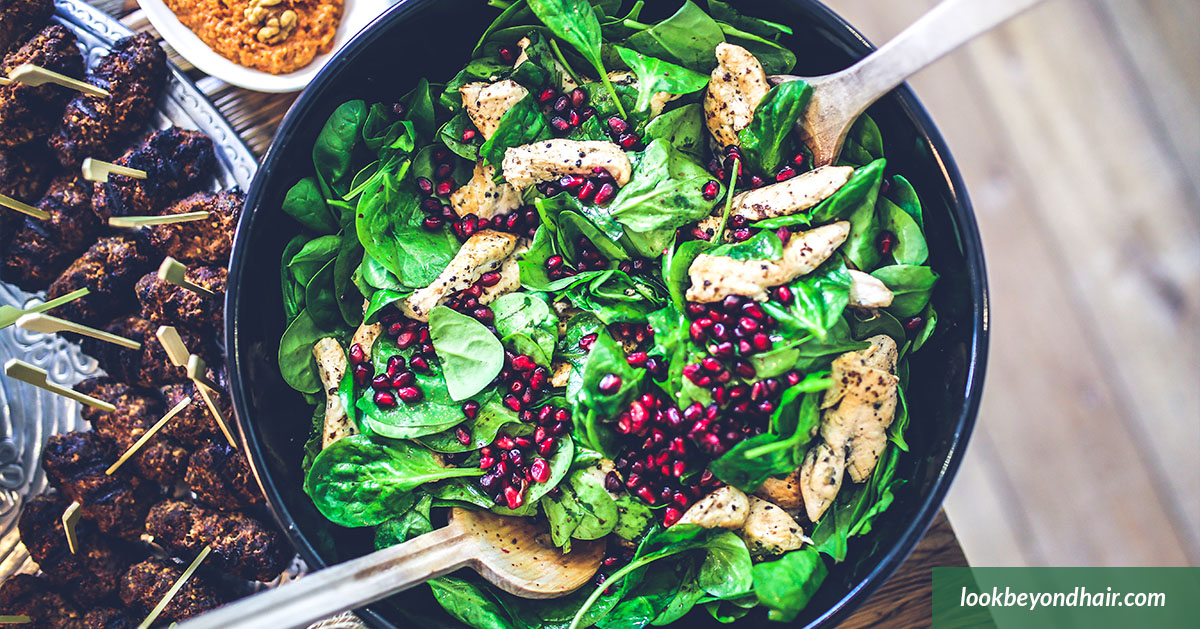
Green vegetables are the foods most commonly missing in modern diets. Learning to incorporate dark, green leafy greens into the diet is essential to establishing a healthy body and immune system. When you nourish yourself with greens, you may naturally crowd out the foods that make you sick.
Greens help build your internal rainforest and strengthen the blood and respiratory system. Leafy green vegetables are also high-alkaline foods which may be beneficial to people exposed to higher amounts of pollution in urban areas.
The alkaline minerals in our bodies are used to neutralize acidic conditions caused by the environment. Green vegetables will help to replenish our alkaline mineral stores and continue to filter out pollutants1. Green is associated with spring, the time of renewal, refreshment and vital energy. In Traditional Chinese medicine, green is related to the liver, emotional stability and creativity.
Green Leafy Vegetables Nutritional Value
Nutritionally, greens are very high in calcium, magnesium, iron, potassium, phosphorous, zinc and vitamins A, C, E and K. They are loaded with fiber, folic acid, chlorophyll and many other micronutrients and phytochemicals. Although choosing organic is recommended, eating non-organic greens is still preferable to not eating any greens at all! Some of the proven and possible benefits of consuming dark leafy greens are:
- Blood purification
- Cancer prevention
- Improved circulation
- Strengthened immune system
- Promotion of healthy intestinal flora
- Promotion of subtle, light and flexible energy
- Improved liver, gall bladder and kidney function
- Cleared congestion, especially in lungs by reducing mucus
Green cabbage is great cooked or raw, or in the form of sauerkraut. Arugula, endive, chicory, lettuce, mesclun and wild greens are generally eaten raw, but can be consumed in any creative way you enjoy. Spinach, Swiss chard and beet greens are best eaten in moderation because they are high in oxalic acid, which inhibits the absorption of the calcium these foods contain. However, rotating between a variety of green vegetables shouldn’t cause any nutritional consequences in regards to calcium.
Ways To Cook Green Leafy Vegetables
Try a variety of methods like steaming, boiling, sautéing in oil, water sautéing, waterless cooking or lightly pickling (as in a pressed salad). Boiling helps greens plump and relax. Boil for under a minute so that nutrients do not get lost in the water. You can also drink the cooking water as a health-giving broth or tea if you’re using organic greens. Steaming makes greens more fibrous and tight, which helps you feel fuller, longer. This is a great method to help curb your appetite for those trying to lose weight. Raw salad is also a wonderful preparation for greens. It’s refreshing, cooling and supplies live enzymes.
In Summary
There are a wide variety of greens to choose from, so try to find options that you will enjoy and eat often. If you get bored with your favorites, be adventurous and explore new greens that you’ve never tried before. Broccoli is one option which is very popular among adults and children. Also try to include bok choy, napa cabbage, kale, collards, watercress, mustard greens, broccoli rabe, dandelion and other dark, leafy greens. Cook up and enjoy!
-Kelsay JL. Effects of fiber, phytic acid, and oxalic acid in the diet on mineral bioavailability. Amer J Gastroenterol. 1987. 82(10):983-6
-Avoid vegetables with oxalic acid? www.drweil.com. 2011
-Committee to Review Dietary Reference Intakes for Vitamin D and Calcium, Food and Nutrition Board, Institute of Medicine.
-Dietary Reference Intakes for Calcium and Vitamin D. Washington, DC: National Academy Press, 2010
-Mayo Clinic Staff. (2011). Energy density and weight loss: Feel full on fewer calories. Mayo Clinic: Weight loss, Retrieved from http://www.mayoclinic.com/health/weight-loss/NU00195

